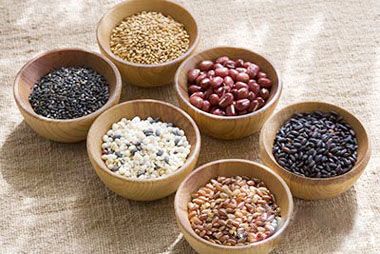Teach you 5 strokes to pick out safe food
1 Look at the ingredients list
Wang Leijun, a nutritionist at the national level, told the New Express reporter that the top two ingredients on the general list of ingredients are the ingredients with the highest content, and the others are successively followed. If real food is at the end and sugar or salt is on the front, beware. "For example, chocolate, cocoa butter is the main ingredient of chocolate, and it will usually be ranked first in the list of ingredients. If you replace it with sugar, then you have to pay attention to it and buy it carefully."
2 Look at the nutritional composition table
According to China's "General Rules for Nutrition Labeling of Prepackaged Foods," prepackaged foods should be labelled with mandatory labeling of energy and 4 nutrient content ("1+4") values ​​and their percentages of nutrient reference value, 4 of which are 4 Core nutrients, namely proteins, fats, carbohydrates and sodium. "The formal food label will have '4+1' on it. Some foods are special, and there are other ingredient labels." Wang Leijun said, look at "4+1" and pay attention to its nutrient reference. Percentage of value (NRV%).
Percentage of nutrient reference (NRV%) indicates the percentage of main nutrients per 100 grams or serving of food contained in the reference value of daily nutrient intake. "For example, a hamburger's energy is 42%, which means that eating a hamburger's energy intake accounts for 42% of your daily intake. The NRV can help consumers with their daily diet and avoid excessive intake of nutrients." Lei Jun said.
3 buy less and eat canned boxed food
In order to ensure the supply of food, canned food emerged with the development of the food industry, bringing convenience to people's lives. Wang Leijun said that canned food is convenient, but from a nutritional point of view, it is recommended not to eat it and eat as much as possible. Fresh food should be eaten as much as possible. “The processing of food will inevitably result in the loss of nutrients, and the addition of supplements is still different from the original. The body's absorption and use of it is not the same."
4 Note the word "hydrogenated"
According to Wang Leijun, pay attention to the “hydrogenated†ingredients in the ingredient list, such as the edible hydrogenated vegetable oil contained in the non-dairy creamer in instant coffee. The hydrogenation process will certainly produce trans-fatty acids, and trans-fatty acids are not good for the human body. They have been proven to cause heart disease, diabetes and cancer. Consumers should be cautious about choosing them.
5 See the word "generation" carefully
"As long as the word 'generation' is written, it must be noted that this ingredient is made up of other compounds or additives, and the taste is also elicited by flavoring agents. For example, cocoa butter substitutes and no cocoa butter components are consumed by consumers. Should buy such food less." Wang Lei Jun also reminded consumers that when buying food should use these logos to select foods, do not let the logo become "furniture."
Prepackaged foods must have nutrition labels on the packaging
Otherwise it can not be sold
From January 1, 2013, China's first National Standard for Nutrition Labeling of Foodstuffs was officially implemented. According to the regulations, the pre-packaged foods produced thereafter must be supplemented with nutrition labels on the packaging. Otherwise, they must not be sold.
Pre-packaged foods: Foods that are pre-packaged or made in packaging materials and containers, including pre-quantified packaging, and pre-quantified foods in packaging materials and containers that have a uniform mass or volume label within a given amount of limits.
Nutrition Label: A prepackaged food label that provides consumers with a description of the nutritional information and characteristics of the food, including a list of nutritional ingredients, nutrition claims, and functional claims for nutrients.
Nutrition Factsheet: A normative table with the name, content, and percent of Nutrient Reference Value (NRV) of the food nutrient.
Nutrition claims: descriptions and statements about the nutritional properties of foods, such as energy levels and protein levels. Nutrition claims include content claims and comparative claims. Content claim: A claim that describes the level of energy or nutrient content in food. The term "contains," "high," "low," or "nothing," such as low-sugar, low-energy, and cholesterol-free, is used.
The nutrient function claims that a certain nutrient can maintain normal growth, development, and normal physiological functions.

Dcp Fire Extinguisher,Dcp Extinguisher,Dcp Type Fire Extinguisher,Portable Dcp Extinguisher
NINGBO TOMAN IMP. & EXP. CO., LTD , https://www.tdotmfiresolution.com